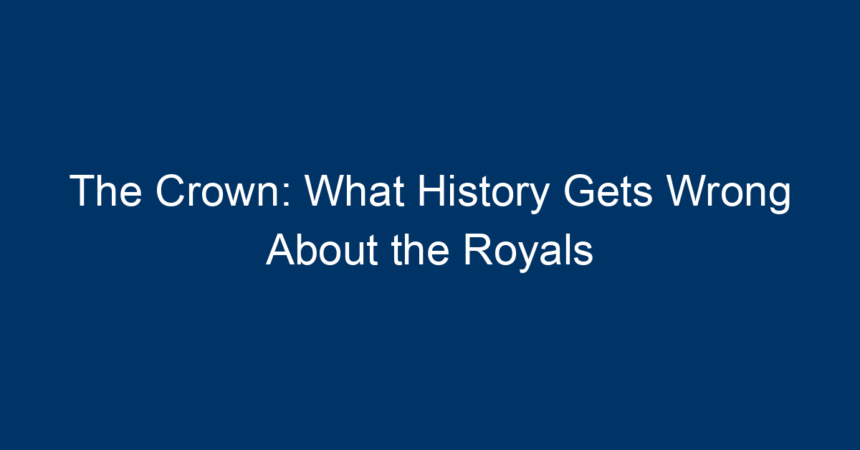Introduction
Netflix’s The Crown has captivated audiences worldwide with its riveting portrayal of the British royal family. While the series has achieved critical acclaim for its production values and performances, it also invites scrutiny regarding historical accuracy. As viewers become invested in the lives of royals, it’s essential to question what parts of history are dramatized and which elements are grounded in fact. In this article, we will explore the significant aspects where The Crown diverges from the historical record, offering insights into the real lives of the royals.
The Royal Family: A Historical Perspective
The Life and Reign of Queen Elizabeth II
The Crown centers primarily on Queen Elizabeth II, detailing her ascent to the throne and her challenges. However, the complexities of her early reign, particularly her relationship with Winston Churchill and her role during World War II, are often oversimplified.
The Early Years
In reality, Elizabeth was groomed for the throne from a young age, a fact that The Crown touches upon but doesn’t deeply explore. The dynamic of her upbringing under her mother and her politically astute father, King George VI, is a crucial backdrop often overshadowed by dramatized personal moments.
The Churchill Connection
Winston Churchill emerges as a prominent figure in The Crown, portrayed as both an advisor and a mentor to the young queen. While their relationship was indeed significant, the show tends to emphasize dramatic tensions that may not fully reflect historical relationships. For example, Churchill’s policies and decisions during his tenure are often presented with a narrative bias that may mislead viewers about his effectiveness as a leader.
Relationships Behind the Curtain
The Strain within the Royal Family
One captivating element of The Crown is its portrayal of the strained dynamics within the royal family. Relationships—particularly those between Elizabeth, her sister Margaret, and their mother—are often rendered with dramatic flair.
Princess Margaret’s Rebellious Image
The Crown depicts Princess Margaret as a rebellious figure, drawn to scandal and modernity. While some of this portrayal has roots in truth, it often magnifies her attempts to break free from royal conventions at the expense of her responsibilities. Historical documents show that Margaret navigated complex emotional landscapes, grappling with public expectations and personal desires.
The Role of Prince Philip
Prince Philip, Duke of Edinburgh’s character development in The Crown has sparked considerable debate. His early life and eventual bond with Elizabeth are depicted, but the series often portrays him in a negative light. In reality, Philip was an ardent supporter of the Commonwealth and played a pivotal role in modernizing the royal family.
The Changing Role of the Monarchy
The Shift in Public Perception
The Crown explores how the monarchy’s relevance has fluctuated over time—especially during tumultuous periods like the 1960s and the rise of the feminist movement. Yet, the series doesn’t fully capture how public sentiment has shifted beyond mere scandal to encompass broader socio-political contexts.
The Impact of Media
The advent of television and media scrutiny in the latter half of the 20th century reshaped the royal family’s public image. The Crown briefly touches on this shift but often overlooks how the monarchy has adapted in response to public opinion and criticism.
The Commonwealth’s Role
A Modern Monarchy
When discussing The Crown, one must acknowledge the monarchy’s evolving role within the Commonwealth. The show provides a narrow view of how the royal family has embraced global responsibilities and represented nations beyond the United Kingdom.
Diamond Jubilee and Beyond
The portrayal of events like the Diamond Jubilee in The Crown has artistic license that often downplays the extensive planning and public engagement required to pull off such monumental occasions. The royals’ commitment to their Commonwealth realms serves as an essential backdrop that shaped not only their identities but also their geopolitical significance.
Debunking Myths: The Royal Family and Scandal
The Affair and the Reality
Renowned for its period dramas, The Crown includes moments of infidelity and scandal, specifically focusing on Charles and Diana’s tumultuous relationship. While this narrative captures public intrigue, it often skews the facts.
Understanding Prince Charles
In real life, Prince Charles faced pressures that The Crown only partially explains. His upbringing and responsibilities have driven him to make choices that require context, not mere sensationalism. The complexity of his emotions, particularly surrounding his marriage to Diana, deserves a more nuanced presentation than the show provides.
Conclusion: Distinguishing Fact from Fiction
As much as The Crown has sparked interest in the British monarchy, it also risks romanticizing or vilifying its figures with dramatic embellishments.
Actionable Insights
- Engage with Historical Sources: Dive into biographies and historical accounts to gain a rounded understanding of the royal family.
- Critically Analyze Characters: Recognize the layers behind the characters portrayed in The Crown. Historical reenactments often highlight sensationalism over facts.
- Consider Broader Contexts: The monarchy’s evolution was shaped by various external pressures, including political climates and societal changes. Understanding these factors can lead to a more comprehensive view of history.
In sum, while The Crown serves as an excellent entry point for discussing royal history, it’s essential to approach it with a critical eye. The real-life stories of the royals are intertwined with complexities that deserve careful exploration beyond the dramatization of a highly acclaimed series.




